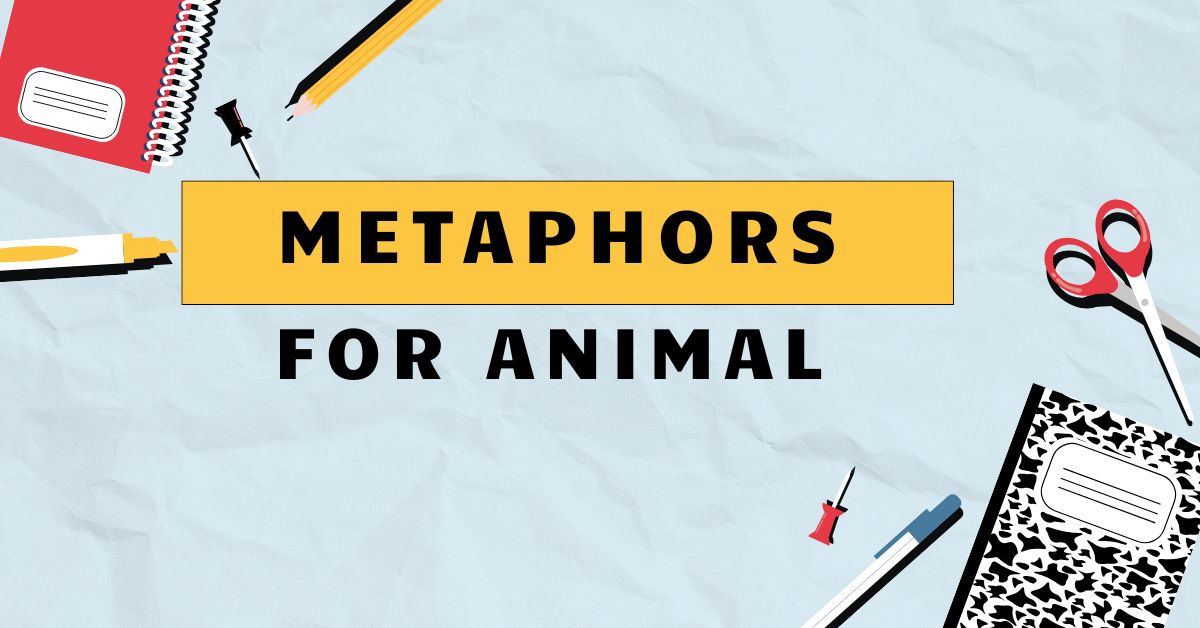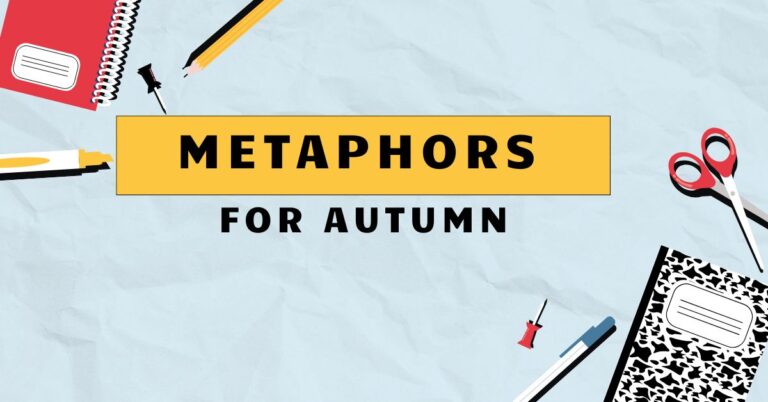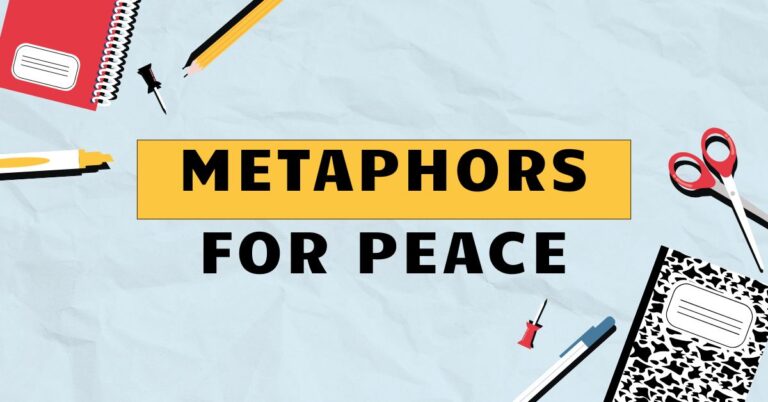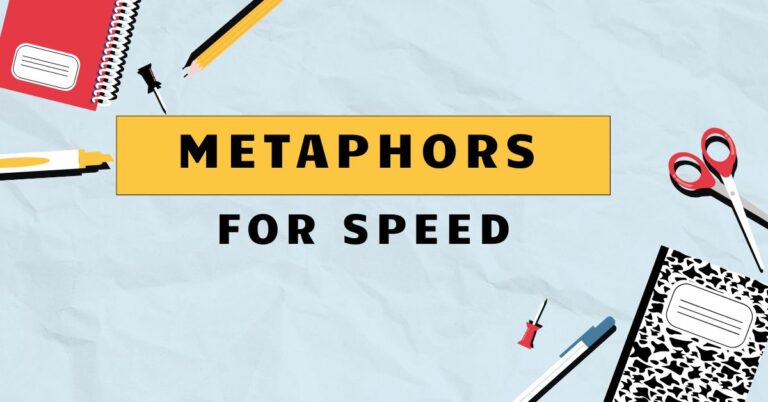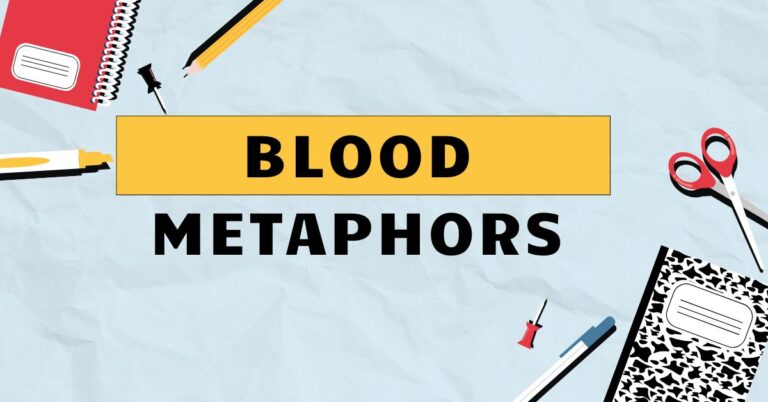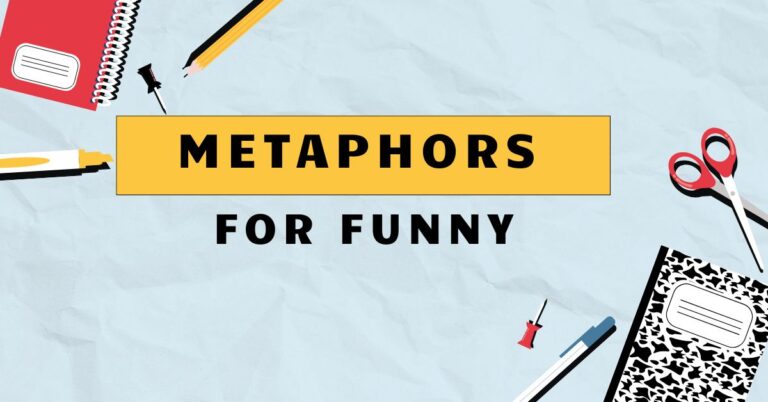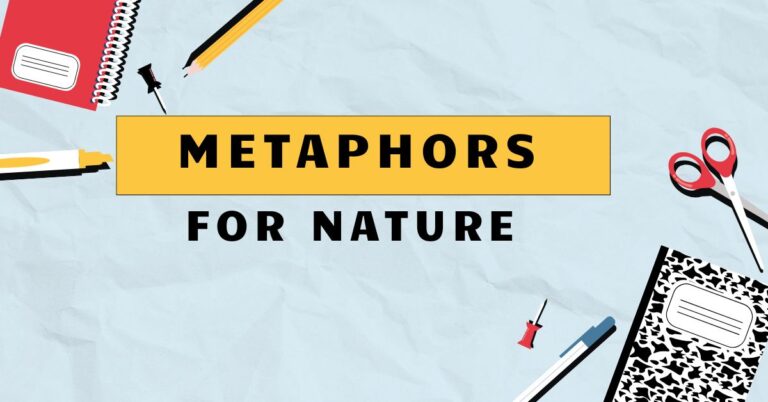43 Animal Metaphors: Understanding Figurative Language
Metaphors are powerful tools in the English language, allowing us to create vivid imagery and convey complex ideas in a concise and engaging way. When these metaphors draw on the characteristics of animals, they become particularly evocative, tapping into our inherent understanding and associations with the natural world.
Mastering animal metaphors enhances both comprehension and expression, enabling more nuanced and impactful communication. This article provides a comprehensive guide to animal metaphors, exploring their definition, structure, usage, and common pitfalls.
This guide will benefit English language learners, writers, and anyone seeking to enrich their understanding and use of figurative language.
Table of Contents
- Introduction
- Definition of Animal Metaphors
- Structural Breakdown
- Types and Categories of Animal Metaphors
- Examples of Animal Metaphors
- Usage Rules
- Common Mistakes
- Practice Exercises
- Advanced Topics
- FAQ
- Conclusion
Definition of Animal Metaphors
An animal metaphor is a figure of speech that compares a person, object, or situation to an animal based on shared characteristics or qualities. Unlike similes, which use words like “like” or “as” to make a comparison, metaphors directly equate one thing to another, creating a more implicit and suggestive connection.
These metaphors leverage the widely recognized traits associated with different animals to convey meaning in a concise and impactful manner.
Animal metaphors fall under the broader category offigurative language, which encompasses various techniques for expressing ideas non-literally. They are particularly effective because they tap into our pre-existing knowledge and cultural associations with animals.
For example, comparing someone to a “lion” instantly evokes images of courage, strength, and leadership. The function of animal metaphors is to enrich language, add depth to descriptions, and create vivid mental images for the reader or listener.
They are used extensively in literature, everyday conversation, and persuasive writing.
The context in which an animal metaphor is used is crucial for its interpretation. The same animal can carry different connotations depending on the situation and the cultural background of the audience.
For instance, a “snake” might represent cunning and treachery in one context, while in another, it could symbolize healing and transformation. Therefore, understanding the intended meaning requires careful consideration of the surrounding text and the speaker’s or writer’s purpose.
Structural Breakdown
The structure of an animal metaphor typically involves two key elements: thetenorand thevehicle. The tenor is the subject being described or compared, while the vehicle is the animal that is used to draw the comparison.
The connection between the tenor and the vehicle is the shared characteristic or quality that forms the basis of the metaphor.
Consider the example: “He is alionin battle.” Here, “he” is the tenor, and “lion” is the vehicle. The shared characteristic is courage or bravery.
The metaphor implies that the person being described possesses the same qualities of fearlessness and strength that are commonly associated with lions. The effectiveness of the metaphor lies in the implicit understanding of these shared traits.
Animal metaphors can be expressed in various grammatical forms, including nouns, adjectives, and verbs. For example:
- Noun: “She is a fox when it comes to business negotiations.” (Fox represents cunning)
- Adjective: “His temper was wolfish.” (Wolfish represents fierceness)
- Verb: “The scavengers vultured around the abandoned property.” (Vultured represents greedily taking advantage)
Understanding the structural components of animal metaphors allows for a more precise interpretation and appreciation of their meaning. By identifying the tenor, vehicle, and shared characteristics, one can fully grasp the intended message and the nuances of the comparison.
Types and Categories of Animal Metaphors
Animal metaphors can be categorized based on the type of characteristic being emphasized: behavioral, physical, or symbolic. Each category highlights different aspects of the animal and draws on distinct associations.
Behavioral Metaphors
Behavioral metaphors compare a person’s actions or behavior to the typical behavior of an animal. These metaphors often highlight traits such as aggression, cunning, loyalty, or laziness.
For example, “Hehuntedfor bargains” compares someone’s shopping habits to the predatory behavior of a hunter. These metaphors rely on our understanding of animal behavior to convey information about human actions.
Physical Characteristic Metaphors
Physical characteristic metaphors focus on the physical attributes of an animal to describe a person or object. These metaphors might emphasize strength, agility, beauty, or ugliness.
For instance, “She had theeyes of a hawk” suggests keen vision or attentiveness. These metaphors leverage our visual understanding of animals to create vivid descriptions.
Symbolic Metaphors
Symbolic metaphors draw on the cultural or traditional symbolism associated with certain animals. These metaphors often convey abstract concepts such as wisdom, purity, or evil.
For example, “He was ascapegoatfor the company’s failures” uses the symbolic association of a goat with sacrifice to represent someone unfairly blamed for the mistakes of others. The interpretation of symbolic metaphors requires an understanding of cultural and historical context.
Examples of Animal Metaphors
The following sections provide extensive examples of animal metaphors, organized by category. Each example illustrates the specific type of comparison being made and the intended meaning.
Behavioral Examples
The table below provides 30 examples of behavioral metaphors, showcasing how animal behaviors are used to describe human actions and qualities.
| Metaphor | Explanation |
|---|---|
| He’s a real shark in the business world. | Implies he is ruthless and predatory in business. |
| She badgered him into agreeing. | Implies she persistently and annoyingly pressured him. |
| They flocked to the concert. | Implies they gathered in large numbers like birds. |
| He lionized the visiting dignitary. | Implies he treated the dignitary with great admiration and importance. |
| She nursed her anger for years. | Implies she carefully and deliberately maintained her anger. |
| He preyed on the vulnerable. | Implies he exploited or took advantage of those who were weak. |
| They ape the latest trends. | Implies they imitate or copy the latest trends mindlessly. |
| She burrowed into her research. | Implies she immersed herself deeply into her research. |
| He hounded her for information. | Implies he persistently pursued her for information. |
| They swarmed the entrance. | Implies they gathered in a dense, moving crowd. |
| The politician ducked the question. | Implies the politician avoided answering the question directly. |
| He wormed his way into her affections. | Implies he subtly and deceptively gained her affections. |
| She pecked at her food. | Implies she ate her food in small, hesitant bites. |
| He stalked her online. | Implies he obsessively followed her online activity. |
| They hibernated during the winter. | Implies they remained inactive and secluded during the winter. |
| The children chattered like monkeys. | Implies they talked incessantly and excitedly. |
| He snaked through the crowd. | Implies he moved stealthily and deceptively through the crowd. |
| She pounced on the opportunity. | Implies she seized the opportunity quickly and eagerly. |
| He roared with laughter. | Implies he laughed loudly and boisterously. |
| The rumors multiplied like rabbits. | Implies the rumors spread quickly and uncontrollably. |
| He flew into a rage. | Implies he suddenly became very angry. |
| She preened in front of the mirror. | Implies she admired herself and adjusted her appearance carefully. |
| He prowled the streets at night. | Implies he moved stealthily and suspiciously through the streets. |
| They scurried to finish the project. | Implies they rushed and hurried to complete the project. |
| He slithered out of the meeting. | Implies he left the meeting discreetly and quietly. |
| She swooped in to help. | Implies she arrived quickly and decisively to offer assistance. |
| He trawled the internet for information. | Implies he searched the internet extensively and methodically. |
| They twittered about the gossip. | Implies they talked idly and excitedly about the gossip. |
| He weaseled out of the deal. | Implies he avoided fulfilling the deal through trickery or deception. |
| She wolfed down her food. | Implies she ate her food quickly and greedily. |
These behavioral metaphors illustrate how animal actions can effectively convey the intensity and nature of human behaviors.
Physical Examples
The following table presents 30 examples of physical characteristic metaphors, demonstrating how animal features are used to describe human appearance and qualities.
| Metaphor | Explanation |
|---|---|
| He has the strength of an ox. | Implies he is very strong and powerful. |
| She’s as graceful as a swan. | Implies she moves with elegance and poise. |
| He’s as blind as a bat without his glasses. | Implies he has very poor vision without his glasses. |
| She has a voice like a nightingale. | Implies she has a beautiful and melodious singing voice. |
| He’s as stubborn as a mule. | Implies he is very unyielding and resistant to change. |
| She has the eyes of a hawk. | Implies she has keen vision and attentiveness. |
| He’s as quick as a fox. | Implies he is clever and perceptive. |
| She’s as busy as a bee. | Implies she is very active and industrious. |
| He’s as timid as a mouse. | Implies he is shy and easily frightened. |
| She has the patience of a saint. | Implies she is very patient and tolerant (indirectly alluding to the lamb-like meekness associated with saints). |
| He’s as free as a bird. | Implies he is unburdened and independent. |
| She’s as slippery as an eel. | Implies she is evasive and difficult to catch. |
| He has a memory like an elephant. | Implies he has an excellent and long-lasting memory. |
| She’s as proud as a peacock. | Implies she is vain and boastful. |
| He’s as quiet as a lamb. | Implies he is gentle and docile. |
| She’s as happy as a lark. | Implies she is cheerful and carefree. |
| He’s as strong as a bear. | Implies he is physically powerful and robust. |
| She’s as wise as an owl. | Implies she is knowledgeable and insightful. |
| He’s as graceful as a gazelle. | Implies he is agile and elegant in his movements. |
| She has skin as smooth as a dolphin. | Implies her skin is soft and flawless. |
| He’s as tough as a rhino. | Implies he is resilient and unyielding. |
| She’s as swift as a cheetah. | Implies she is very fast and agile. |
| He’s as vulnerable as a turtle without its shell. | Implies he is exposed and defenseless. |
| She has hair as black as a raven. | Implies her hair is a deep, glossy black color. |
| He’s as loyal as a dog. | Implies he is devoted and faithful. |
| She’s as elegant as a flamingo. | Implies she is strikingly graceful and stylish. |
| He’s as light as a feather. | Implies he is very lightweight and delicate. |
| She has a bite like a viper. | Implies she is sharply critical and venomous in her words. |
| He’s as hungry as a wolf. | Implies he is extremely hungry and ravenous. |
| She’s as playful as a kitten. | Implies she is lively and full of fun. |
These physical characteristic metaphors provide vivid descriptions by associating human qualities with recognizable animal traits.
Symbolic Examples
The following table provides 20 examples of symbolic metaphors, illustrating how the cultural or traditional symbolism of animals is used to convey abstract concepts.
| Metaphor | Explanation |
|---|---|
| He was a scapegoat for the company’s failures. | Implies he was unfairly blamed for the mistakes of others. (Goat symbolizes sacrifice) |
| She is a dove in a world of hawks. | Implies she is peaceful and gentle in an aggressive environment. (Dove symbolizes peace) |
| He’s a lone wolf. | Implies he prefers to be alone and independent. (Wolf symbolizes independence) |
| She’s a black sheep of the family. | Implies she is different and considered an outsider. (Black sheep symbolizes nonconformity) |
| He’s a cash cow for the organization. | Implies he is a reliable source of income. (Cow symbolizes abundance) |
| They are like lemmings following each other blindly. | Implies they are following a trend without thinking for themselves. (Lemmings symbolize blind following) |
| He is a sitting duck. | Implies he is an easy target. (Duck symbolizes vulnerability) |
| She’s a social butterfly. | Implies she is outgoing and enjoys socializing. (Butterfly symbolizes sociability) |
| He is a shark in the legal profession. | Implies he is ruthless and aggressive in his career. (Shark symbolizes ruthlessness) |
| She’s a mother hen to her colleagues. | Implies she is nurturing and protective of her colleagues. (Hen symbolizes protectiveness) |
| He’s a night owl. | Implies he is most active and alert at night. (Owl symbolizes nocturnal activity) |
| She is a busy beaver. | Implies she is industrious and hardworking. (Beaver symbolizes hard work) |
| He is a watchdog for the company’s finances. | Implies he is vigilant and protective of the company’s assets. (Watchdog symbolizes vigilance) |
| She’s a pack rat. | Implies she hoards unnecessary items. (Rat symbolizes hoarding) |
| He’s a copycat. | Implies he imitates others without originality. (Cat symbolizes imitation) |
| She’s a dragon lady. | Implies she is a powerful and intimidating woman. (Dragon symbolizes power and intimidation) |
| He’s a sacred cow. | Implies he is someone who is immune to criticism or questioning. (Cow symbolizes untouchability) |
| She’s a bird of paradise. | Implies she is exotic and beautiful. (Bird of paradise symbolizes beauty and rarity) |
| He’s a guinea pig. | Implies he is being used for experimentation. (Guinea pig symbolizes experimentation) |
| She’s a canary in a coal mine. | Implies she is an early warning sign of danger. (Canary symbolizes warning) |
These symbolic metaphors rely on the cultural meanings associated with animals to convey deeper and more nuanced ideas.
Usage Rules
Using animal metaphors effectively requires attention to several key rules. First, ensure that the comparison is clear and relevant.
The shared characteristic between the tenor and the vehicle should be easily recognizable by the audience. Second, consider the connotations of the animal being used.
Different animals carry different cultural and emotional associations, so choose an animal whose connotations align with the intended meaning. Third, avoid clichés.
Overused animal metaphors can sound unoriginal and weaken the impact of your writing.
Clarity and Relevance:The effectiveness of an animal metaphor hinges on the audience’s ability to understand the connection between the subject and the animal. If the comparison is too obscure or far-fetched, the metaphor will fail to convey the intended meaning.
For example, comparing a politician to a “sea cucumber” might not be effective unless the audience is familiar with the specific characteristics of sea cucumbers, such as their slow movement and lack of assertiveness.
Connotations:Animals often carry strong cultural and emotional associations. For instance, a “lion” typically evokes images of courage and strength, while a “snake” might suggest deceit and treachery.
Be mindful of these connotations when choosing an animal metaphor. Using the wrong animal can create unintended or contradictory impressions.
Avoiding Clichés:Overused animal metaphors, such as “busy as a bee” or “stubborn as a mule,” can sound unoriginal and diminish the impact of your writing. Strive to find fresh and creative comparisons that will engage your audience and convey your message in a more compelling way.
Consider using less common animals or focusing on specific aspects of an animal’s behavior or appearance to create a more unique and memorable metaphor.
Common Mistakes
One common mistake is using mixed metaphors, where the comparison combines incompatible images. For example, saying “He’s a wolf in sheep’s clothing, but he also flies like an eagle” creates a confusing and contradictory image.
Another mistake is using animal metaphors inappropriately, such as comparing someone to an animal in a way that is offensive or dehumanizing.
Mixed Metaphors: Mixing metaphors occurs when two or more incompatible metaphors are combined in a single statement, creating a nonsensical or confusing image. For example:
- Incorrect: “He’s a shark in the water, but he also has a heart of gold.” (Sharks are typically associated with ruthlessness, which clashes with the idea of a kind heart.)
- Correct: “He’s a shark in the water when it comes to business, but a teddy bear at home with his kids.”
Inappropriate Use: Using animal metaphors in a way that is offensive or dehumanizing can be harmful and insensitive. Avoid comparing people to animals in ways that reinforce stereotypes or perpetuate prejudice.
- Incorrect: “She’s acting like an animal.” (This implies that her behavior is uncivilized or uncontrolled.)
- Correct: “She has the tenacity of a bulldog when she’s working on a project.”
Lack of Clarity: If the connection between the subject and the animal is not clear, the metaphor will fail to convey the intended meaning. Ensure that the shared characteristic is easily recognizable by the audience.
- Incorrect: “He’s a platypus.” (Unless the audience is familiar with the unique characteristics of platypuses, this metaphor will be confusing.)
- Correct: “He’s a bit of a platypus, an odd mix of qualities that don’t quite fit together.”
Practice Exercises
Test your understanding of animal metaphors with the following exercises.
| Question | Answer |
|---|---|
| 1. Complete the metaphor: “He is as ______ as a fox.” | clever |
| 2. What does the metaphor “She is a social butterfly” mean? | She is outgoing and enjoys socializing. |
| 3. Identify the animal metaphor in the sentence: “The politician ducked the question.” | ducked |
| 4. Rewrite the sentence using an animal metaphor: “He is very strong.” | He has the strength of an ox. |
| 5. What type of animal metaphor is “He is a lone wolf”? | Symbolic |
| 6. Complete the metaphor: “They flocked to the store like _______.” | birds |
| 7. What does the metaphor “He’s a real shark in the business world” mean? | He is ruthless and predatory in business. |
| 8. Identify the animal metaphor in the sentence: “She has a voice like a nightingale.” | nightingale |
| 9. Rewrite the sentence using an animal metaphor: “She is very busy.” | She’s as busy as a bee. |
| 10. What type of animal metaphor is “She’s the black sheep of the family”? | Symbolic |
Exercise 2: Identify the Type of Metaphor
| Sentence | Type of Metaphor (Behavioral, Physical, Symbolic) |
|---|---|
| 1. He wolfed down his dinner. | Behavioral |
| 2. She has the eyes of a hawk. | Physical |
| 3. He is a sitting duck. | Symbolic |
| 4. They scurried to finish the project. | Behavioral |
| 5. She is as graceful as a swan. | Physical |
| 6. He’s a cash cow for the organization. | Symbolic |
| 7. The politician ducked the question. | Behavioral |
| 8. He has a memory like an elephant. | Physical |
| 9. She’s a bird of paradise. | Symbolic |
| 10. She preyed on his insecurities. | Behavioral |
Exercise 3: Fill in the Blank
| Sentence | Answer |
|---|---|
| 1. He is as stubborn as a _____. | mule |
| 2. She is as free as a _____. | bird |
| 3. They are like _____ following each other blindly. | lemmings |
| 4. He has the strength of an _____. | ox |
| 5. She’s as quiet as a _____. | lamb |
| 6. He is as sly as a _____. | fox |
| 7. She is as busy as a _____. | bee |
| 8. He is as hungry as a _____. | wolf |
| 9. She has a voice like a _____. | nightingale |
| 10. He’s as timid as a _____. | mouse |
Advanced Topics
For advanced learners, exploring the cultural and historical origins of animal metaphors can provide deeper insights into their meaning and usage. Additionally, analyzing how animal metaphors are used in literature and rhetoric can enhance critical thinking and analytical skills.
Examining the evolution of animal metaphors over time can also reveal changing cultural attitudes towards animals and their symbolic significance.
Delving into the study ofetymologycan reveal the origins and historical development of animal metaphors. Many common animal metaphors have roots in ancient folklore, mythology, and literature.
Understanding these origins can provide valuable context for interpreting their meaning and appreciating their cultural significance. For example, the metaphor “wolf in sheep’s clothing” originates from Aesop’s Fables and carries a rich history of deception and betrayal.
Analyzing the use of animal metaphors inliterature and rhetoriccan enhance critical thinking and analytical skills. Authors and speakers often use animal metaphors to create vivid imagery, evoke emotions, and persuade their audience.
By examining the specific choices they make and the effects they achieve, one can gain a deeper understanding of the power and versatility of animal metaphors. Consider, for instance, how Shakespeare uses animal imagery in “Macbeth” to convey themes of ambition, guilt, and madness.
The study ofcomparative literaturecan also offer valuable insights into the cross-cultural variations of animal metaphors. Different cultures may associate different meanings and connotations with the same animal.
For example, while the owl is often seen as a symbol of wisdom in Western cultures, it can be associated with death and bad luck in other parts of the world. By exploring these cross-cultural differences, one can develop a more nuanced understanding of the cultural context in which animal metaphors are used.
FAQ
Q1: What is the difference between a simile and a metaphor?
A: A simile compares two things using “like” or “as,” while a metaphor directly equates one thing to another without using these words. For example, “He is as brave as a lion” is a simile, while “He is a lion” is a metaphor.
Q2: Why are animal metaphors so effective?
A: Animal metaphors are effective because they tap into our pre-existing knowledge and cultural associations with animals, creating vivid mental images and conveying meaning in a concise and impactful manner.
Q3: How can I avoid using clichés in my animal metaphors?
A: To avoid clichés, try to find fresh and creative comparisons that will engage your audience. Consider using less common animals or focusing on specific aspects of an animal’s behavior or appearance to create a more unique and memorable metaphor.
Q4: What should I do if I’m not sure about the connotations of an animal?
A: If you’re unsure about the connotations of an animal, research its cultural and historical associations. Consult dictionaries, encyclopedias, or online resources to learn more about its symbolic meaning.
Q5: Can animal metaphors be offensive?
A: Yes, animal metaphors can be offensive if they are used inappropriately, such as comparing someone to an animal in a way that reinforces stereotypes or perpetuates prejudice. Avoid using animal metaphors in ways that are dehumanizing or insensitive.
Q6: How do I identify an animal metaphor in a text?
A: To identify an animal metaphor, look for instances where a person, object, or situation is being directly compared to an animal without using “like” or “as.” Pay attention to the context and consider the shared characteristics between the subject and the animal.
Q7: Are animal metaphors universal across all cultures?
A: No, animal metaphors are not universal across all cultures. Different cultures may associate different meanings and connotations with the same animal.
Be mindful of these cultural differences when using or interpreting animal metaphors.
Q8: How can I improve my use of animal metaphors in writing?
A: To improve your use of animal metaphors, practice identifying and analyzing them in literature and everyday conversation. Experiment with different animal comparisons and pay attention to the effects they create.
Seek feedback from others and be open to revising your metaphors as needed.
Q9: What is the difference between an animal metaphor and personification?
A: An animal metaphor compares something to an animal, while personification gives human qualities to non-human things. For example, “The wind howled like a wolf” is personification, whereas “He is a wolf in sheep’s clothing” is an animal metaphor.
Q10: How do animal metaphors enhance communication?
A: Animal metaphors enhance communication by adding depth, vividness, and emotional resonance to language. They allow us to convey complex ideas in a concise and memorable way, making our writing and speaking more engaging and persuasive.
Conclusion
Animal metaphors are a vibrant and powerful aspect of the English language, offering a rich tapestry of imagery and meaning. By understanding their structure, types, and usage rules, you can effectively harness their potential to enhance your communication skills.
Remember to choose your animal comparisons carefully, considering the connotations of the animal and the context in which it is being used. Avoid clichés and be mindful of cultural differences to ensure that your metaphors are clear, relevant, and impactful.
With practice and attention to detail, you can master the art of using animal metaphors to create vivid and compelling language.
As you continue your journey in mastering English grammar, remember that consistent practice is key. Explore different types of texts, such as literature, news articles, and speeches, to identify and analyze animal metaphors in various contexts.
Experiment with creating your own animal metaphors and seek feedback from others to refine your skills. By embracing the power of animal metaphors, you can unlock new levels of creativity and expression in your writing and speaking.

